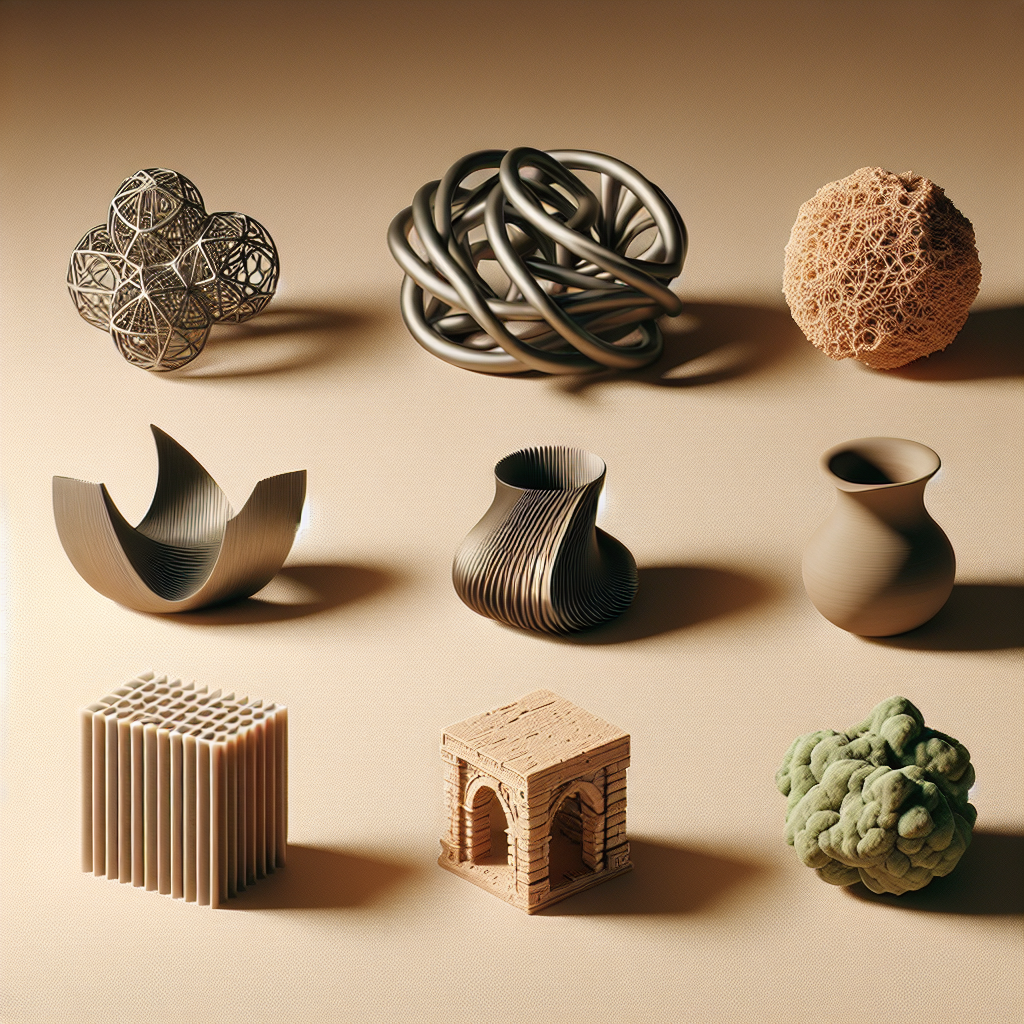Introduction: Moving Beyond Plastic in 3D Printing
3D printing has revolutionized manufacturing, prototyping, and DIY creativity, but traditional materials—especially plastics like PLA and ABS—raise environmental and performance concerns. As sustainability and material innovation become more important, alternative materials are gaining traction for their unique properties and lower ecological footprint. Drawing on years of hands-on experience, this article explores the best alternative materials for 3D printing without plastic.
1. Metal Filaments: Strength and Versatility
Metal 3D printing has been a game-changer for industries requiring robust, functional parts. While industrial systems use direct metal laser sintering (DMLS) or selective laser melting (SLM), desktop printers can utilize metal-infused filaments such as stainless steel, bronze, copper, and aluminum. These filaments blend fine metal powder with a binder, which is later removed via post-processing (debinding and sintering), resulting in near-solid metal parts. Metal 3D printing is ideal for functional prototypes, jewelry, and custom tools, offering increased strength and heat resistance compared to most plastics.
2. Ceramics: Artistic and Functional Innovation
Ceramic 3D printing opens doors for highly customized, heat-resistant, and food-safe objects. Specialized ceramic pastes or powders are printed, then kiln-fired to achieve their final properties. Ceramic prints are common in art, dental applications, and technical components. While more complex in terms of post-processing, ceramics provide unrivaled thermal stability and aesthetic potential beyond the reach of plastics.
3. Wood-Based Filaments: Sustainable and Aesthetic Appeal
Wood filaments, made by blending PLA with recycled wood fibers or sawdust, offer a much more environmentally friendly option than pure plastic. These filaments can be printed on standard FDM printers and result in parts with a natural wood texture and even a “woody” smell during printing. They can be sanded, stained, or painted like real wood, making them popular for decorative items, models, and bespoke furniture parts. While not 100% plastic-free, they significantly reduce fossil fuel content and add renewable material to the mix.
4. Paper and Cellulose-Based Materials: Biodegradable and Affordable
Cellulose, the primary component of paper, has entered the 3D printing world through filaments and binder jetting processes. Paper-based 3D printing, such as the technology used by Mcor (now CleanGreen3D), creates models by binding and cutting layers of standard office paper, resulting in full-color, biodegradable objects. Alternatively, cellulose filaments are made by blending cellulose with minimal binder, providing a strong, lightweight, and compostable option for prototypes and educational models.
5. Clay and Concrete: Building Large and Sustainable Structures
Large-scale 3D printing projects, such as houses and architectural elements, increasingly use clay and concrete. These materials, extruded through specialized nozzles, allow for rapid, sustainable construction with reduced waste. Clay printing is also used in ceramics and sculpture, while concrete printing facilitates innovative shapes and reinforcement options not achievable through traditional casting.
6. Bio-Based Filaments: Pioneering Green Solutions
Bio-based filaments go beyond PLA’s corn starch roots by utilizing materials such as algae, hemp, coffee grounds, and even recycled oyster shells. These emerging filaments can reduce carbon footprints and introduce new mechanical or aesthetic properties. Algae-based filaments, for example, offer rapid renewability, while hemp filaments boast excellent tensile strength and biodegradability.
7. Food Materials: Edible 3D Printing
Edible 3D printing is gaining popularity in culinary arts and education. Materials like chocolate, sugar, dough, and cheese are extruded to create intricate, edible designs. Although not suitable for traditional engineering parts, food printing demonstrates the versatility of 3D printing beyond plastics and opens doors for custom cakes, chocolates, and other specialty foods.
Conclusion: Embracing a Future Without Plastic
The world of 3D printing is no longer limited to petroleum-based plastics. Whether your goal is sustainability, unique aesthetics, eco-friendly manufacturing, or new performance standards, alternative materials offer exciting pathways to innovation. As material science advances and demand for greener solutions increases, expect non-plastic 3D printing to become more accessible and transformative across industries. Now is the perfect time for makers, designers, and manufacturers to explore and adopt these promising alternatives.

Leave a Reply